Published
6 years agoon
What happens when you stick a bunch of monsters into a mansion? You get Monster Soup, a webcomic by Julie Devin, also known online as ‘Ghost.’ I’ve followed Monster Soup for a long time and I am also honored to say that Julie is a good friend of mine. Julie’s approach to horror is fresh, fun, and a good fit for readers at Haunted MTL, so, I asked her to talk about her core cast of monstrous personalities.
Alright Julie, before we get down to the characters, I need to know what horror stories are most influential to you.
I always have a hard time answering questions like these, but I would definitely say… Dracula, Frankenstein, An American Werewolf in London, The Craft, Hellraiser and Poltergeist.
It feels like some of these are obvious given the subject matter of the comic, but how do you feel Hellraiser might have influenced your work?
I think it’s more of a subtle influence as I watched those films when I was younger and most of the themes and visuals have stuck with me. Small bits seep into my work, whether it’s a costume/design idea or a sense of surrendering to something terrifying or becoming the thing that terrifies.
What appeals to you most about the horror genre?
I think it’s the sense of not being in control. In slasher films, it’s the fear of someone hellbent on killing you. In supernatural horror, it’s more about the unknown that can terrify. The horror genre reminds me of a roller coaster. There’s a thrill and fear while being safely secured in your seat. Horror allows the exploration of many themes and ideas while we remain in the safety of the real world.
So, how did you develop the idea of Monster Soup?
Monster Soup began as a simple idea; what if a group of monsters lived under the same roof? I wanted to keep the main cast as close to the classic monsters as seen in films and novels; zombie, witch, ghost, werewolf, vampire, and mad scientist. From there on out, anything goes.
Alright, so let’s walk through the characters then.
Sounds great!
So, please tell me about Bo, who is a personal favorite character of mine.
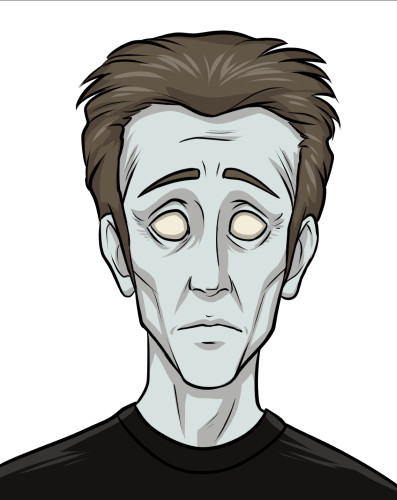
I wanted Bo to be the antithesis of the stereotypical zombie. He was also shaped by the Twilight mania that was going on at the time. I wanted a James Dean/Luke Perry type who fights his urge to eat humans, but instead, eats animals. Even though Bo is dead, he is still an idea of a slow, deteriorating death. This element of the character is a reflection of my grandmother who has dementia. It may seem odd, but I find it a little therapeutic writing this character.
I really like how you have approach Amanita as the resident witch.
This story about monsters didn’t feel complete without a witch. Instead of the typical hag-n-rags, her initial design was genie inspired. I wanted this character to embrace her appearance: makeup, nice clothing, and jewelry, all things stereotypically feminine. Outward appearance aside, her personality can be abrasive, and forming long-term friendships is something she continues to struggle with.
I am particularly a fan of Jacklyn’s design, it evokes “ghosty” without being too transparent.
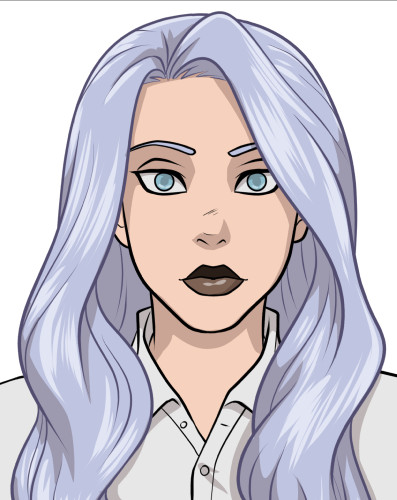
Inspired by Dr. René Belloq from Raiders of the Lost Ark, specifically regarding archaeology and clothing, Jacklyn is the ghost of the story. She also carries a common trope about ghosts– “ghost amnesia.” While she knows she is dead, she doesn’t remember how she died, and is not really concerned with knowing about her past or death.
How about the resident Werewolf, Pepper?
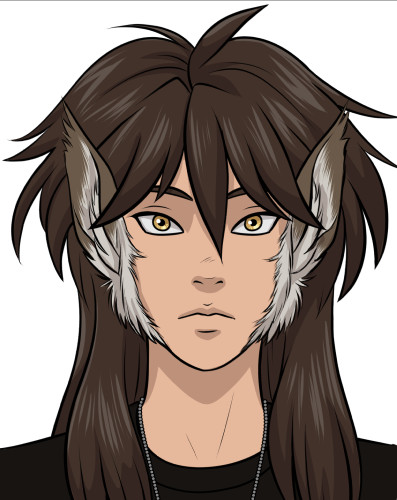
At the center of werewolf lore is the transformation from human to beast; from something we know to something frightening and unpredictable. The center of Pepper’s character lies within her inability to accept herself.
The Ginger Snaps films, especially the sequel, influenced the earliest ideas of who Pepper was; someone who is fighting a battle they have no chance of winning.
Luke, the vampire? He seems just moody enough…
For the vampire character, I originally planned for Luke to be Dracula. The plan didn’t last for long. While I wanted to keep some hints that perhaps he and Dracula were one in the same, I began to develop more of the story, and quickly, the two separated. I wanted Luke to be the opposite of the recent trend seen in vampire fiction. Where those vampires are brooding and filled with self-loathing, Luke has accepted what he is centuries ago. He also isn’t concerned with protecting humans.
What about Vengari, the mad scientist?
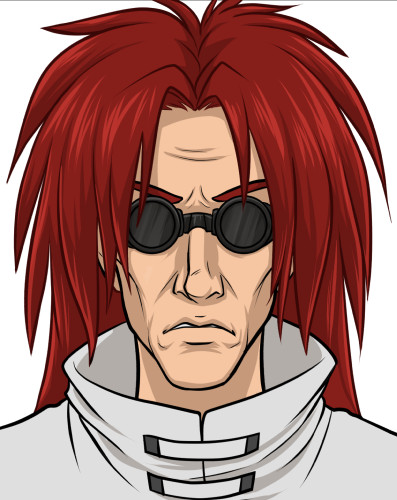
The castle that houses the main cast of supernatural criminals needed an owner. The easiest answer for me was a mad scientist, with influences from Frankenstein and Dr. Moreau. When it came to Vengari’s appearance, I knew I didn’t want him to be the typical white-haired eccentric surrounded by Tesla coils. The red hair he ended up with seemed like an odd choice, but it stuck. In some weird way, he still reminds me of a demented Beaker from The Muppets.
His madness, unlike his striking red hair, isn’t as prominent. He is someone who is fascinated by the supernatural world and seeks to explain its existence through science. Magic to him isn’t just magic. Everything has a scientific explanation. The supernatural world isn’t really “super” through his eyes.
Noni, the chef? She almost feels like the mascot of the series.
In a comic with a slight food theme, I knew the castle needed a chef. I personally have an inability to make cute characters, so I wanted this character to be cute and innocent on the outside, but a mess everywhere else. She is also a chimera created by Vengari in his attempt to design a satyr. Other creations live elsewhere on the island (similar to the Island of Doctor Moreau), however, Noni lives in the castle with her “father.” Noni is the part of me who lives without any inhibitions. She will say what she wants regardless of others’ feelings.
Momo, how about him?
Momo is the Frankenstein’s Monster of the cast. Unlike the violent criminals he was created from, Momo’s mind is an innocent one. I always liked the idea of a large, muscular man who is nothing more than a big ol’ teddy bear. As for his appearance, he is loosely based on Vin Diesel. Momo’s greatest passion is cooking and helping Noni who he sees as his sister and boss.
Now as for Toadie…
This character came from a previous webcomic I attempted to make, but it never made it past the first chapter. When compiling characters for Monster Soup, I was looking for my Igor and realized Toadie was the perfect fit. In some moments within the comic, he also takes on a more “Renfield” roll when around Luke.
Julie was very kind to share some recent pages from the comic, so please give them a read and then hop over to Monster Soup for more great reading.




David Davis is a writer, cartoonist, and educator in Southern California with an M.A. in literature and writing studies.

You may like
-
Lucy Undying is the Lesbian Dracula Retelling We Needed
-
Bonus Black Friday story: Zombie Apocalypse by Jennifer Weigel
-
Review: Don’t Eat the Pie, Monique Asher’s delicious trope fest.
-
Watching Witches of East End, As A Modern Witch
-
STM’s Dogman Territory: Werewolves in The Land Between the Lakes (2024)
-
The Craft (1996): Review
1 Comment
Leave a Reply
Cancel reply
Leave a Reply
This site uses Akismet to reduce spam. Learn how your comment data is processed.
Horror in graphic novels
Read Hide if you need a dark graphic novel to talk about over Thanksgiving
Published
4 months agoon
November 24, 2024Thanksgiving is coming up this week if you live in America. And many of us are going to be in contact with younger relatives. And some of you might be on a mission to be the cool/bad influence relative that introduces them to the horror genre. If so, I have just the graphic novel for you.
Published in September of 2023, Hide is based on the novel of the same name by Kiersten White. It was adapted into a graphic novel by Scott Peterson, and illustrated by Veronica and Andy Fish. It tells the story of fourteen people who believe they are in a reality show, playing Hide and Seek in an abandoned theme park. It should surprise absolutely no one to find out that the creators of the show have something much darker in mind.
The story
Our main character is Mack. She’s had about the worst rough start to life one could imagine and is currently living in a homeless shelter. There, she’s given the opportunity to participate in a game show, playing hide-and-seek.
I like to think that if the shelter manager had known of Mack’s horrific past, she wouldn’t have ever made that suggestion.

Mack signs up and soon finds herself in an abandoned amusement park with thirteen strangers. The rules are simple. Hide during the day, and be the last person found. Of course, this is nothing but a lie. There will be no winners, only victims.
What works
The first thing we have to talk about is how Hide the graphic novel compares to Hide, the original book. Of course, there wasn’t going to be enough room for every single part of the story. There were some cuts. But it doesn’t feel like anything essential was cut here. The characters remain the same. The storyline is still there, sans any structural issues. Often, this is a difficult thing to do. Some stories don’t translate from one medium to another. But Peterson did a wonderful job.
Of course, we can’t talk about a graphic novel without talking about the art. And the art in this book is fantastic. The colors are rich and vibrant. Everything looks exactly like one might picture it when reading the novel.
Except for the monster, which I have to admit I pictured more like a Rat Creature from Bone.
My favorite part was the journal entries. I loved the cryptic sigils that are scribbled over the page without explanation. I loved the different handwriting. I loved the clippings of newspapers and pictures. The whole thing was just wonderfully, eerily, immersive.
Finally, I want to point out that Hide is a great graphic novel even if you’ve never read the book, and never intend to. This is not a companion for the book. It tells the story all on its own. And yes, reading a graphic novel is just as valid as reading any other novel. This is just a good story, with good artwork. No other reading is necessary.
What didn’t work
There was only one thing I didn’t love about Hide. And that was the ending.
It’s usually the ending.

In the novel, the ending is ambiguous but satisfying. This ending was, without ruining it, a little more ambiguous. There are questions I really wanted answers for that I didn’t get. There is at least one character that I’d like to know about. Are they okay? I don’t know. And this ending doesn’t even really give us a hint. All we can do is hope.
If you are going to be picking this up for a younger person, be aware that there is some rough language. There are also a few graphic scenes of violence, so if that’s the sort of thing that will get you banned from further holiday events, be aware. But if you have a tween or teen who needs to be encouraged to delve into the creepy side, Hide is a great way to do it. Of course, there’s no shame in just reading it yourself.
 (4.5 / 5)
(4.5 / 5)
Book Reviews
Vermis II: Mist & Mirrors, a Book Review
Vermis II: Mist & Mirrors is a graphic novel by Plastiboo, acting as the “official guide for a game that doesn’t exist.”
Published
7 months agoon
September 17, 2024Vermis II: Mist & Mirrors is a graphic novel by Plastiboo. The team behind the work includes Plastiboo as the artist, Hollow Press as the publisher, Michele Nitri as the editor, Christian Dolz Bayarri as the graphic designer, Marco Cirillo Pedri as the graphic supervisor, and E.R. as the English editor and proofreader. The Vermis collection seems sold out in its current editions, but I still recommend ordering from the original publisher, Hollow Press.
Who stares back from the dark glass? The Wayfarer travels–cursed and haunted by their past–through the distant lands and places within the Mist & Mirrors. Endure a corrupt world and struggle to fend off the curses that mark you. Venture forth, Wayfarer, and perhaps find peace and salvation.
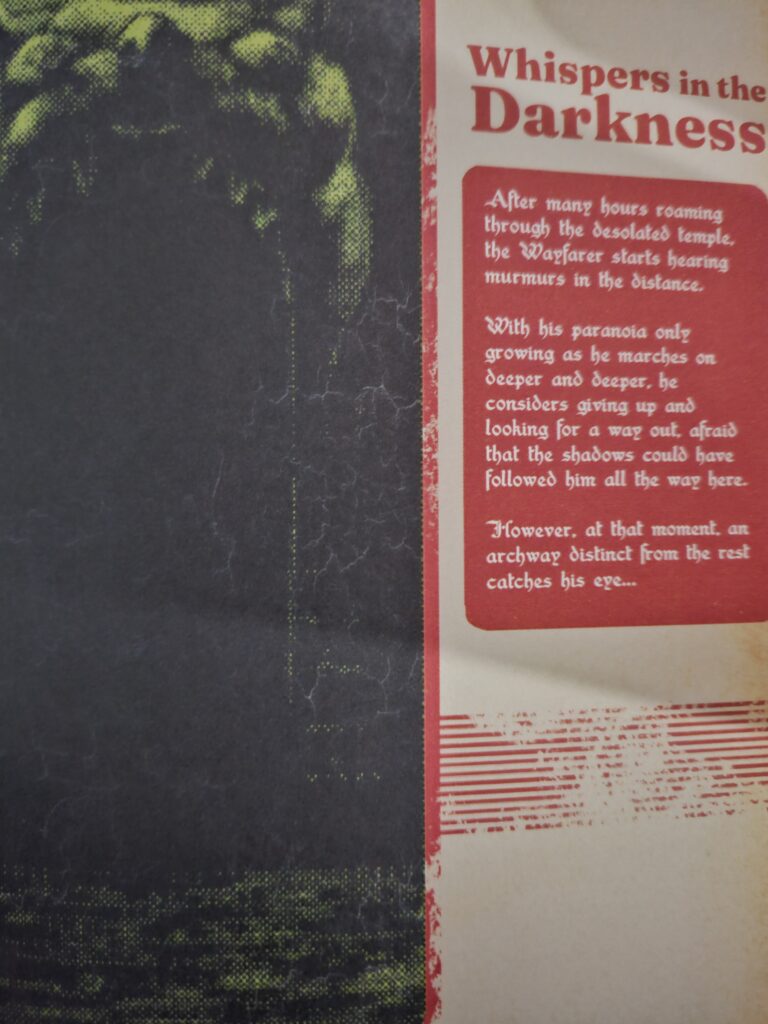
What I Like about Vermis II: Mist & Mirrors
The premise remains an “official guide” to a game that does not exist. However, one key distinction that stands out is the corrosion of this “official guide” mark, suggesting Mist & Mirrors centers itself as a graphic novel. In this sense, it more accurately hits its vision while providing an engaging story.
Mist & Mirrors places its character selection at the end of the graphic novel, instead, choosing a character and allowing the reader to follow that journey. While this moves away from the “official guide” concept, it better fleshes out the world and creates a more independent product.
Where Vermis I held a heavy retro-game aesthetic, Vermis II takes this to the next level while adding a wider range of color than the original. Not only does this add more aesthetic variety, but it also vastly improves readability. My greatest critique of the first graphic novel was the general lack of readability that impacted the experience, but Mist & Mirrors seems to take this to heart. Beyond the variety and improvement, the design changes the color themes to match the distinct lands the “Wayfarer” embarks on, giving a direct purpose to the changes.
On starting the graphic novel, I half expected a spiritual successor set in a new world. While its setting certainly differs from the original, Mist & Mirrors expands on the lore and history. In fact, the exploration of Mist & Mirrors adds value to the original and encourages a re-read. Honestly, that’s what all sequels strive (or should strive) to succeed.
Despite the colorful innovation, Vermis II: Mist & Mirrors delivers that same bleak horror popularized by Dark Souls. It still wears its inspirations on its sleeves while better communicating its “game mechanics.”

Tired Tropes and Triggers
Again, there aren’t many points worth mentioning regarding tropes or triggers. As the graphic novel takes themes and trends from the Soulslike genre, it’s dark and bleak but not overwhelmingly so.
Payment and delivery (for American audiences) still come with a 15 to 45-day wait period with little room for verification or updates. The process through PayPal remains seamless, and I received the novel within the timeframe, but it’s a consideration.
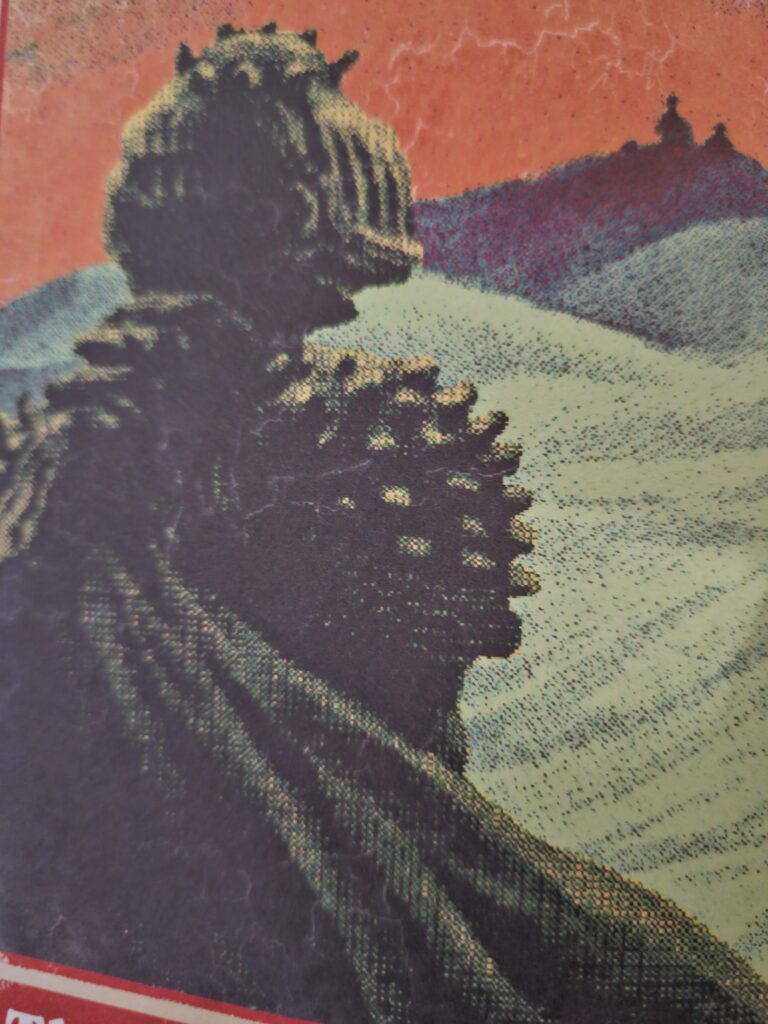
What I Dislike about Vermis II: Mist & Mirrors
While there are notable points to mention in this section, Mist & Mirror vastly mitigates Vermis I’s core issues. However, that isn’t inherently the same as fixing them in some cases. For example, readability remains a slight issue. I will emphasize it as a slight issue with the vast improvements implemented.
For those fans of the specific niche that Vermis aims to deliver, Mist & Mirrors tones down the “official guide” aspect. Instead, it favors a more straightforward narrative that follows a specific character. This brings life to the “game world” and makes an independent product but limits Vermis I’s game guide concept.
On a more personal note, I did enjoy the concept of Vermis I’s classes over the classes of Mist & Mirrors. Naturally, there are some interesting concepts, but nothing haunts me like the Infant Seeker or Rat Man. However, the new choices seem to provide a stronger narrative and backstory.
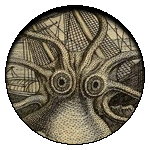
Final Thoughts
Vermis II: Mist & Mirrors vastly improves in many aspects of the original, telling a story set in its bleak and fascinating world. While it does veer from the original concept, it does so to make a more independent product. If you are looking to lose yourself in a strange world or dive deeper into Vermis’ underexplored lore, Mist & Mirrors seems tailor-made for you.
Published in April of this year, Bad Dreams in The Night is a collection of horror comics by the artist and author Adam Ellis. With the description stating that it is a graphic novel version of Scary Stories to Tell in the Dark, I had to get my hands on it. And it did not disappoint.
The stories
Bad Dreams in the Night consists of eleven short horror stories. I honestly don’t think there’s a bad one in the whole bunch. So let’s just highlight a few.
Easily my favorite story in the book was Little House in the Sea. It’s a sweet, eerie little tale that seems like a pinprick view into a dark and horrifying world. It left me with so many questions that I fear will never have answers. The story is about a young woman and her mother, who live on a little island all alone. The young woman is never to ask about what is on the other side of the sea. Then, her mother dies. And everything changes, but not by a lot.
Green Ribbon was another great story. It’s a retelling of the classic Girl With a Ribbon story from the original Scary Stories book, in which a man is confused and eventually angry that the love of his life wears a ribbon around her neck and won’t tell him why. I liked this updated version. It’s a stark reminder that just because we marry someone, we aren’t owed all of their secrets.
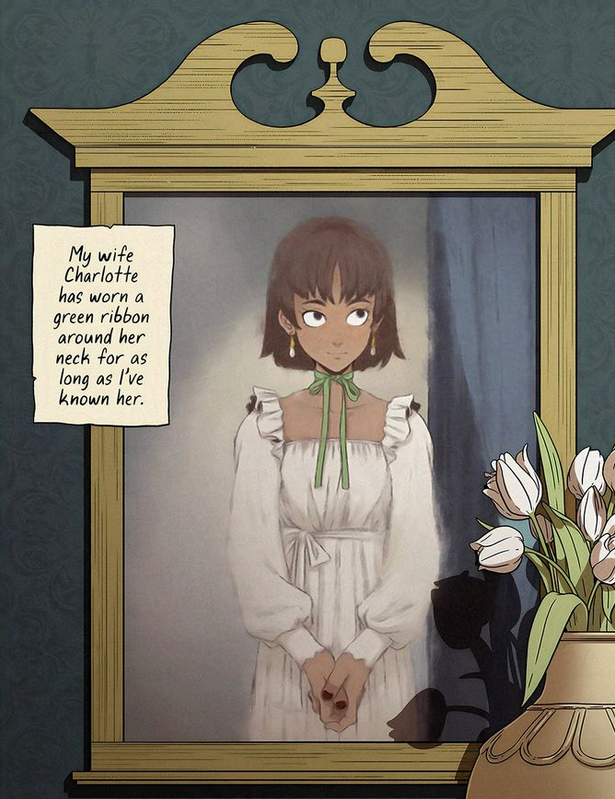
What worked
Of course, the first thing I have to point out about Bad Dreams in the Night is the fantastic artwork. Ellis was a cartoonist first, and it shows.
The artwork is part of the storytelling as well. The best example of this is the story Better Kate Than Never. The younger sister character, Taffy, has such an animated face during the scenes with a ‘studio audience’. When she is just herself, her face is flat, and far more mature than we’d expect for a girl her age.
Though, I suppose based on the story, she might be any age.
Another really enjoyable thing was the mini-essays at the end of each story. As a creator myself, I love the little peeks into the creative process. I know how I come up with stories. But it’s different for everyone, and the story behind the story is often just as fun.
Finally, I have to praise a feature that applies to Ellis’s work overall, not just this book. Whenever he writes scary stories (and he has posted quite a few on his social media) they are a fascinating blend of cute and horrifying. The artwork always has a lovely, innocent, cartoonish look. The children always look like cartoon children, with exaggerated large heads and wide circular eyes.
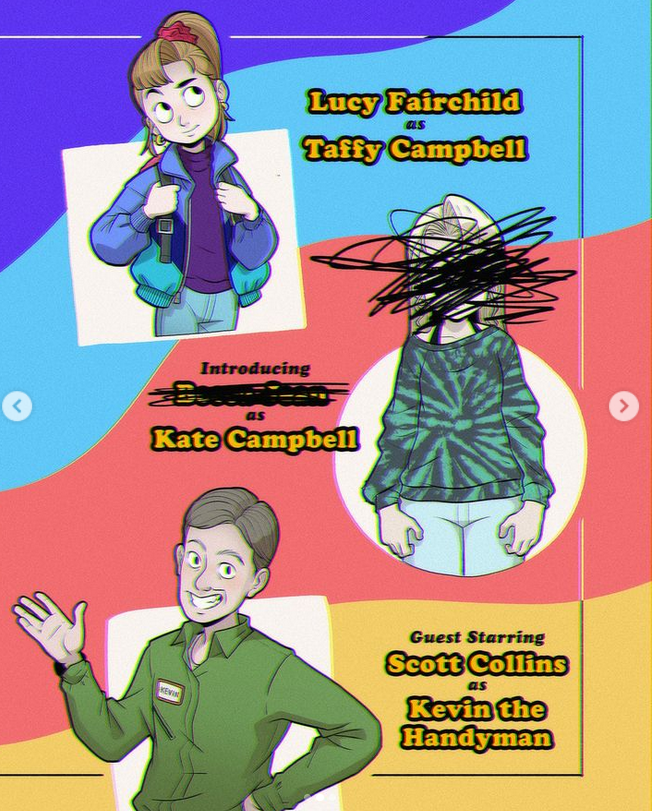
At the same time, Ellis doesn’t pull any punches when it comes to the blood and gore. One story in particular, Milk Door, is a perfect example of this. I don’t want to spoil the ending for you, but it is graphic, horrifying, and wonderful.
What (kind of) didn’t work
I only have one issue with this book. If you follow Ellis on social media, you’ve likely seen at least some of these stories before.
Though, even as I say this, I’m not sure what could have been done about it. Only the beginnings were shown on Instagram. This was a marketing tactic and an effective one. You get the setup for free, but you have to read the book for the punchline.
Bad Dreams in the Night was a really enjoyable way to spend a few hours. In the end, my only real complaint is that it could have been longer. But of course, that is one of the chief rules of entertainment. Always leave people wanting more.
(usr 5)
By the way, if you like this you might enjoy my haunted apartment novella, Quiet Apocalypse. The main character is a modern witch, and I share some real magic in this fictional story of an unexpected end of the world.

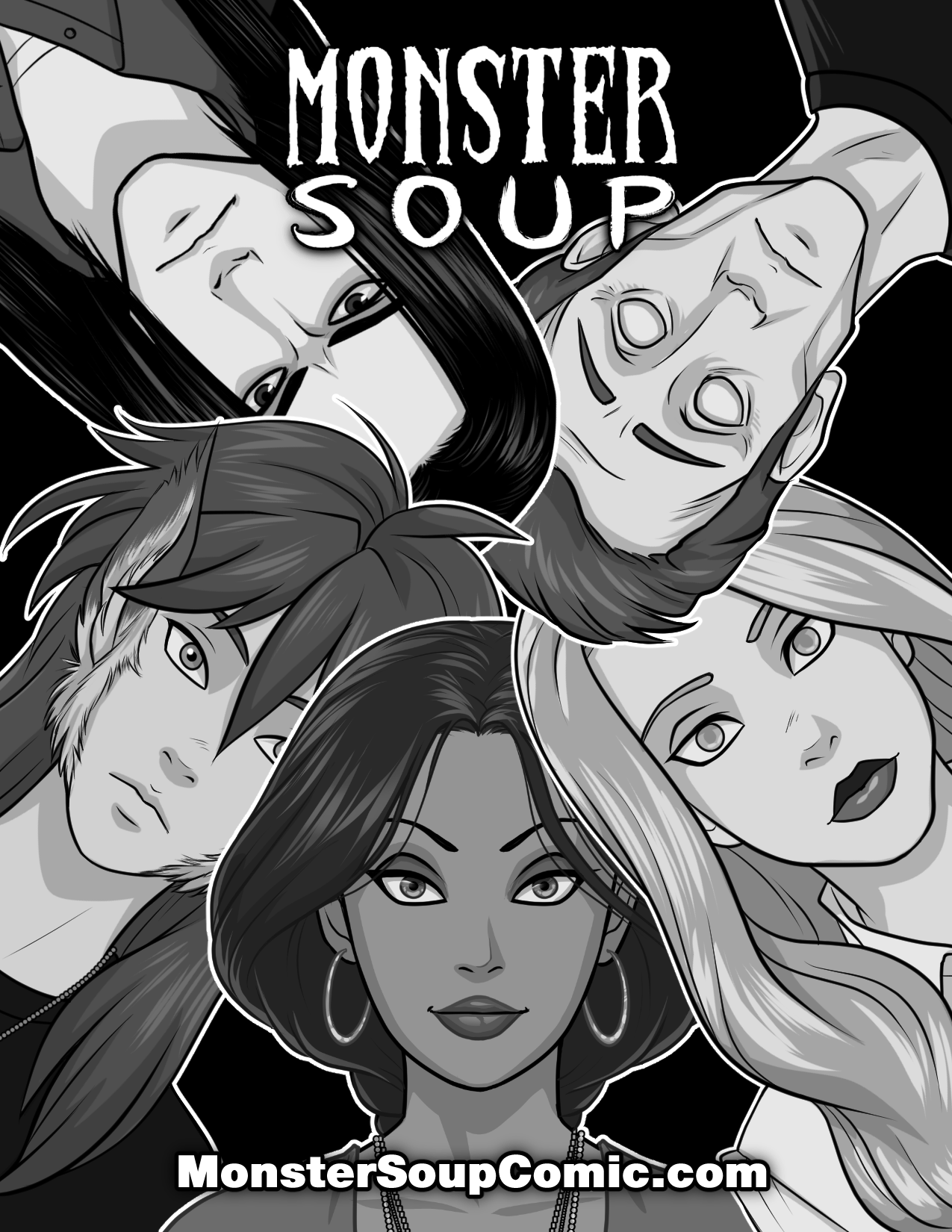






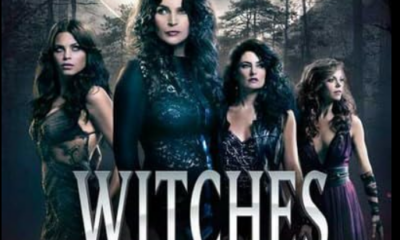

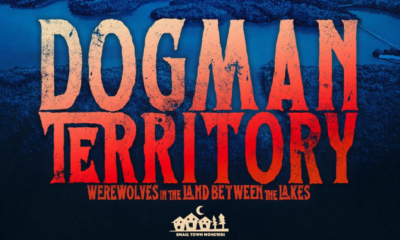

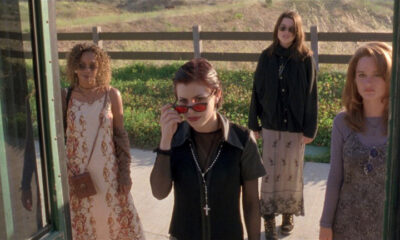

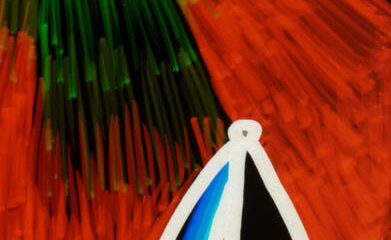

Pingback: "Monster Soup Halloween 2019" by Julie Devin - Haunted MTL